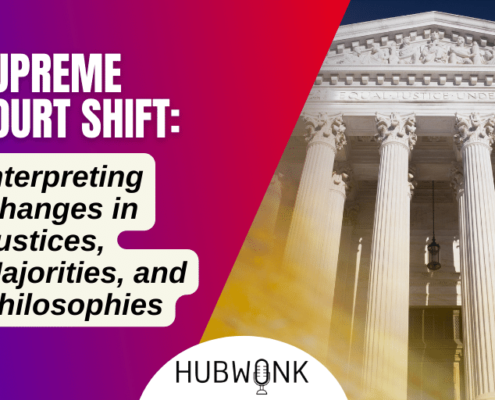Right To Save: Paying Healthcare Consumers To Shop For Value
/in Featured, Healthcare, Podcast Hubwonk /by Editorial Staff
This week on Hubwonk, host Joe Selvaggi talks with healthcare policy expert Josh Archambault about the findings from his Cicero Institute report, The Right to Save: The Next Generation of Price Transparency. He outlines how to incentivize healthcare consumers to utilize price information to reduce out-of-pocket costs, and lower healthcare costs for everyone.
Guest:
 Josh Archambault is a Senior Fellow at both Pioneer Institute and the Cicero Institute. He has served as a senior legislative aide to a governor, legislative director for a state senator, and spend years as a healthcare expert for think tanks operating in 35 states and D.C. Josh’s healthcare policy work has been covered in outlets including the Wall Street Journal, USA Today, The New York Times, Fox News, NPR, MSNBC, Money Magazine, and National Review Online. He is also a regular contributor to the influential Forbes blog, The Apothecary. Josh holds a master’s in public policy from Harvard University’s Kennedy School of Government and a B.A. in political studies and economics from Gordon College.
Josh Archambault is a Senior Fellow at both Pioneer Institute and the Cicero Institute. He has served as a senior legislative aide to a governor, legislative director for a state senator, and spend years as a healthcare expert for think tanks operating in 35 states and D.C. Josh’s healthcare policy work has been covered in outlets including the Wall Street Journal, USA Today, The New York Times, Fox News, NPR, MSNBC, Money Magazine, and National Review Online. He is also a regular contributor to the influential Forbes blog, The Apothecary. Josh holds a master’s in public policy from Harvard University’s Kennedy School of Government and a B.A. in political studies and economics from Gordon College.
Get new episodes of Hubwonk in your inbox!
WATCH:
Read a Transcript of This Episode
Please excuse typos.
Joe Selvaggi:
This is Hubwonk. I’m Joe Sevaggi.
Joe Selvaggi:
Welcome to Hubwonk, a podcast of Pioneer Institute, a think tank in Boston. Americans annually spend more than $4 trillion on healthcare, or about $12,500 per person per year. Despite policy efforts to bend the cost curve, the price of hospital services alone has increased by over 200% within the last 20 years. The lower prices and contain healthcare spending. Some propose a single payer system or price controls, while, while intentioned research has shown such policies will add trillions of dollars to the federal debt, reduced disposable income for vulnerable families, stifle market innovation, do little to control total healthcare costs, and still fail to improve overall healthcare quality or outcomes. True reform, many policy makers contend only begins when market actors have incentives to shop for better prices and deliver better value. A compelling new prescription from the health policy think tank. The Cicero Institute dubbed the patient’s right to save act, seeks to align incentives by building off existing federal cash rate disclosure rules, price transparency initiatives, and successful public and private programs that reward patients when they seek out more affordable health services.
Joe Selvaggi:
We explore the promise of such healthcare innovation is my guest today. Pioneer Institute’s Senior Fellow in healthcare, Josh Archambault. Mr. Archambault is also a senior fellow at the Cicero Institute, where he is the co-author of a new paper entitled Patients Right to Save. Mr. Archambault will share with us the findings and recommendations of his work, which identify misaligned incentives and barriers to consumer choice that have served to drive healthcare costs up. This paper identifies guidance as to how patients and the medical community could use information about price, quality, and value to drive costs for affordability. We will discuss how his proposals would work and what listeners and legislators can do to encourage its adoption. When I return, I’ll be joined by Senior Healthcare fellow Josh Archambault.
Joe Selvaggi:
Okay, we’re back. This is Hubwonk. I’m Joe Selvaggi, and I’m now pleased to be joined by Josh Archambault, a frequent guest and fan favorite of Hubwonk. Welcome back to the show, Josh. Thanks so much, Joe, for having me back. Okay. Well, I’m very interested to talk about your new paper that you produced at the Cicero Institute. Our, our listeners, those who have heard our conversations in the past, know you and I are fond of markets. We think that markets do a great job of delivering value to consumers. So I think our, our, our listeners share that view in general. But when it comes to healthcare some may feel uncomfortable that market forces are the best way to to distribute healthcare products. Healthcare is somehow different. So I wanna, let’s start at the beginning and just establish how markets behave. In your paper talking about how do you save substantial cost in healthcare, you lay out how markets work in other areas that are not healthcare. I think specifically you talk about how we choose cars or our groceries share with our listeners, just economics one on one. How do other industries other than healthcare provide such good high quality, low cost and abundant services?
Josh Archambault:
Yeah, so I, I think there is this big debate on whether healthcare is unique and, and it is helpful at times to step back. So I think the first thing we need to ask ourselves is just what are the basics that we need for a market to function? And first and foremost, I think most people would agree, whether they’re on the right or the left or in the middle, is that you actually need known prices. And that has been one of the challenges in healthcare for decades, in that there is often not a known price to the consumer. The second thing is you need to be able to do something with that info, that information. Once you know it you need to have options. And the way that we have set up our healthcare system is very is probably the opposite of what you would do if you wanted a true market to function.
Josh Archambault:
So it I to level set in the paper, we just make the case that we do not have a free market in healthcare. Yes, there are private sector actors in, in, in healthcare involved, but it is not functioning the way that you would shop for groceries or shop for a car. Now, many people who have shopped for a car in the, the last few years I mean, I know it’s been a little bit crazy with unique circumstances, but generally speaking, you can get online, you can look at reviews, you can look at prices. You can shop from any sort of car dealership or from an individual. Your car insurance or auto insurance doesn’t dictate where you can receive the service or purchase a car. That’s not the case in healthcare. Your health insurance plan is dictating where you can even receive care going forward in most cases.
Josh Archambault:
And so in the paper, we try to at least contrast the typical experience for people that they’re able to do access coupons for groceries, if you will. If they want to try to save money, look at a basket of goods to compare apples to apples before they’re able to move forward and make the point that in the status quo in healthcare, that is typically not the case. And so that is kind of laying the framework for the proposal that we lay out in the paper of how we can, without blowing up the entire system. But how do we actually get to a place where incentives matter, where patients actually have some basic information and they’re rewarded for acting on that behavior. And also the providers are, because there’s been a disconnect for decades in which the patient ultimately isn’t the, the consumer, it’s often an HR department who’s picking the health insurance plan or the CEO of a company picking the plan. It’s not the actual individual patient.
Joe Selvaggi:
So let’s pull back a little bit and, and draw a similar comparison. So if I go for a car, I think is an important point you make. Certainly my car insurance company doesn’t say you must shop here or there. They don’t even tell me what make or model. I, I can go where I like. This is very different, let’s say in healthcare where I do have, let’s say even a wide network or a narrow network. I can only go in certain place, but of course, what I need to know in order to meaningfully shop is to know the price. If I only want a Chevrolet, I can get the same Chevrolet, different dealers for different prices, but then of course I can decide whether I want a Chevrolet or a, or, you know, something more expensive. I, I can do that all the while using price to, to, to guide my choices. No such equivalent exists in healthcare. We go in blindly. It’s as if our car insurance company not only tells us which car dealer to buy from, but which car to buy, and we have no idea what we spent on it. Do, do I have, Is that the analogy? Fair?
Josh Archambault:
Yeah. And I think, I think that analogy is absolutely fair, and there’s added complexity within that. I think sometimes that the individual and Rollie or patient is focused on just what their estimated out of pocket is, which makes sense on paper. But long term, that’s ultimately not what you know matters. That they wanna make sure that the premium stays low long term, but that’s not what they’re focused on. They’re focused on their deductible, how much they pay before things. So we argue in the paper that often people are looking at the wrong piece of information for whether it’s a good deal or not going forward. The the other thing that we point out in the paper is that whether if you get your EM employee excuse me, your insurance from your employer more often than not, you’re offered a very limited choice of plans.
Josh Archambault:
And for a family person who’s got multiple kids in their fifties, their health needs are going to be quite different than a 28 year old, a single person. And yet they’re often offered the exact same service. And so we want a insurance plan. So we wanna make sure that how do we, given all of this diversity, given all this black box ness, if you will, on pricing and the, the incentives and being able to see the options at the right time, at the right price, how, how do we get around that? And the proposal we lay out in the paper is ensure agnostic. In fact, it says we’re not going to be able to reform all of the status quo system, but we know incentives do matter. And we do know that there’s a subset of the population for non-emergency care.
Josh Archambault:
I think everybody agrees emergency care is hard to shop and probably not something you should do shop. But for the vast majority of care, it’s schedulable, it’s related to your lifestyle. You can pick between options. And often as research has shown in the last couple years from Pioneer and a number of other institutions, price variation, I mean by thousand percent can be available within under a mile at two different locations, sometimes even in the same same facility. The price variation is dramatic. And so we’re really just trying to get at, at that variation.
Joe Selvaggi:
So there’s a lot going on. Let’s unpack some of the ideas that you describing there. You, you did sort of brush over the idea that insurance companies are a big part of the story. We’ve dealt with this in, in other episodes of Hub Wonk. But let’s, I, I think in the minds of most healthcare consumers, they imagine their healthcare insurance company is negotiating good prices on their behalf, right? There’s a, an information asymmetry. My, my hospital, my, my provider, these are very complex concepts. So when I go to my insurance company, they tell me who’s the best hospital, who’s the best doctor, who’s the best you know, provider, And they’re in theory, incentivized to get the best price. Why isn’t that sufficient? If I don’t know the price, surely my insurance company does, and they’re looking out for me, why? Why doesn’t that work?
Josh Archambault:
Yeah. So one of the things that we really examine is the insurance health insurance industry really brings two things to the table, two value propositions. The first one is that they can spread risk, which in healthcare matters a lot. You know, somebody’s gonna get cancer going to have a very expensive year, they’re gonna have an emergency. And it’s difficult for most individuals to be able to pay for that expense. So you buy insurance to spread that risk. The second one is what you just highlighted, which is that they’re able to negotiate. I’m not gonna go out and negotiate a rate with every single provider in a 50, a hundred mile radius. And so therefore I’m outsourcing that responsibility to my insurance company and anticipating that they’re gonna be able to get the best deals for me and for my coworkers on the same plan.
Josh Archambault:
Well, it turns out that’s not always true. Sometimes it is, but it’s not always true. And so what we did as more claims information has become available as more providers have moved towards cash based services out of pure frustration of dealing with the status quo. We found, and there’s been research out of Vanderbilt from Larry Van Horn and other research that we’ve done, talking to price transparency, price transparency companies, we estimate on average the cash prices are about 40 to 50% cheaper than often what your insurance company is negotiating for you. And so that begs the question, if they’re not negotiating the best deals for you, and as most Americans have deductibles and they are paying out of pocket before their insurance kicks in, if we, if we were to say, then why are they not able to access those cash providers? It’s there, the one that’s coming out of their pocketbook, out of their bank account being taken away from their mortgage payment, their grocery bill.
Josh Archambault:
You know, we, we know inflation is really taking a bite out of folks. We’ve seen healthcare inflation for decades now way above anything else. We’ve just kind of gotten used to it, if you’ll, And so the reform first and foremost looks at that question and says, We need to make sure that patients know what the cash price is, and we need to make sure that all providers are offering that so that if there is a better deal to be had that a patient doesn’t get penalized for going to see such an option.
Joe Selvaggi:
Now, you and I have talked about proposed legislation and since past legislation, you know, not no surprises and tri requirements for price transparency, we’re, we’re, we’re trying to get there, right? Policy makers are aware of this problem. First, before I ask you, your paper breaks down this whole sort of evolution of this price transparency from 1.0 2.0, and your paper contends that it’s proposal 3.0, which I guess is the holy grail or finally to arrive. But what has been the past legislation requiring transparency and why ha why aren’t we there yet? Why, why can’t I know what a what a procedure costs?
Josh Archambault:
Yeah, I, I would say we are, you can start to, you still have to work a little hard to get there. And, you know, states have a hodgepodge of legislation. I mean, Massachusetts in 2012 did pass one of the first most comprehensive versions of this, where a patient could see what the actual negotiated rate was between your insurance company and a provider. And that was progress. But I think we learned as we dug into that law, as we talked to people in the public that the incentives still weren’t aligned for people to use that information. So having that basic information out there is important. It’s essential to be able to move forward, but there’s a couple other things that are needed. You need to make sure that the providers are incentivized to be competitive with their pricing, and you need to make it a relatively seamless process.
Josh Archambault:
You need tools. We’re not expecting a patient to pick up the phone and call 40 providers to, to shop around. And we are very close. I mean, there’s already tools on the market, and we highlight a few of them in the paper of companies that are healthcare, Blue Book talent. There’s a number of these companies, sesame, which is a cash based marketplace that are, if you want to seek out these alternatives, they’re, they’re getting to a place where you can do so. The question still though, is what role does your plan design play and whether you can even go see these options. And so this 3.0 is making sure that not only are you able to see what your insurer is negotiating for, but you’re seeing a contrast for the cash rate. And to see, am I actually getting a good deal or not? And if you’re not, then the reform lays out a way for you to jump your insurer network wall, if you will, to be able to access these less expensive, more affordable options.
Joe Selvaggi:
So let’s drill down. Again, I, I, I like your framework 1.0, 2.0, 3.0. So for the benefit of our listeners, what if you can delineate what was 1.0 and where did it fail? What is 2.0? Where did it fail and why it’s 3.0 sort of a a fix for the shortcomings of the earlier version?
Josh Archambault:
Yeah, so 1.0 was really just what is the estimated out-of-pocket cost for the individual patient? So this is, where are you and your deductible? What is your copay, excuse me, co-pay going to be going forward? And that’s, you know, what’s not irrelevant information. I, I want to know that as a patient, if I’m gonna be paying outta pocket, how much I’m gonna be paying out of pocket. Unfortunately, research we did, a pioneer and a few other places have highlighted this fact. There’s some games that are played here in the contracting. And what ends up happening is big hospital systems that have some of the highest prices will make themselves look cheaper from a copay standpoint, but then charge three times as much from the insurance company, which translates to higher premiums for the patient the next year. And so there’s some games that are being played here.
Josh Archambault:
And so estimated out of pocket doesn’t always mean that it’s, you’re going to the best deal. So 2.0 is what I just described in Massachusetts, which is to say, Well, what is the actual rate that’s going to be paid by the insurance company? We wanna know the negotiated rate, the, the check that’s going to be cut, helpful information, but the incentives are really still not aligned for patients to take action on that information. And so, and also you need to be able to compare between different providers. And if that’s not easily available, it’s hard to take advantage of 2.0. So 3.0 really takes the next step and we’re calling this reform the patient’s right to save. And there’s three components to it. And perhaps just give, let me give you an illustration for an mri, just as an example. So let’s say that you need an mri, you’ve injured your knee playing sports you know, Joe, you and I are getting older and occasionally that happens.
Josh Archambault:
So you need, you need to get a check up. And so you, this is, let’s say patient’s right to save is law. The, the first component of it is all providers need to say, Here’s the cash rate that we would accept. So let’s say that you find a cash rate MRI for $500, and then you’re, of course, the next question is, Well, should I go there or should I go to one that’s in network for my insurer? And let’s say you look around and the cheapest one you can find in your insurance network is $1,000. So this is the second component of patient’s, right? To save it says, You know what? You should go to the $500 one if you’d like to, You’re gonna save everybody money. You’re gonna save the insurer money, you’re gonna save yourself money. So you should be able to go do that, and you will not be penalized for doing so, and the insurance company is gonna be required to recognize that $500 that you pay towards your deductible.
Josh Archambault:
Whereas right now, if you were to go to that $500 option, it’s out of network. And in many insurance plan designs, you wouldn’t get any credit at all. So as a result, most patients would go to a higher cost option just so they could get credit thinking, Well, I’m paying for this insurance and I want it to kick in, so like at least I want some credit towards receiving care. So that’s the second piece. You, you don’t, you’re not penalized for going to that option. The third piece is for those that exceed their deductible, they’ve paid their deductible. If they continue to see, and let’s say fast forward to the end of the year, and unfortunately you get injured again, Joe or I get injured again playing sports and you need another mri, it’s just, it’s gonna be covered by insurance company. It’s medically necessary.
Josh Archambault:
And you, you go to that $500 option, you’ve had some medical care throughout the year, but now you go to the $500 option. Once you succeeded deductible, the reform says that you are actually as the patient going to be paid. The difference between the $500 MRI and the 1000, you’re gonna get half of that in savings, probably in a check or cash from your insurance company because you have done, you’ve sought out value, you’ve saved everybody money. And this is really for the very first time aligning incentives both for the providers and for the patients to save money and not penalizing them to do that. And in the paper we lay out that there’s actually a business case here. And this is really important because I think people think, cuz that’s to your very first question, Joe. Well, why isn’t it hard to shop for healthcare?
Josh Archambault:
We know the tools are out there. And so in the paper we point out that a third party, one of these other companies I’ve mentioned, or many others, if they want to take a little bit of savings by helping facilitate you finding the deal, this becomes a much more seamless process. So you would just simply, you with your primary care doctor, say, Joe, you need an mri hop on your phone. You’re like, Oh, this app says that I, here’s a cash option down the street. They’re gonna make an appointment for me, they’re gonna file my paperwork for me, and they’re only when they save me money, are they gonna take 15, 20% of my savings or something like that. So it’s really aligns the incentives for all players.
Joe Selvaggi:
So Josh, there’s a lot there to to chew on. I think it’s one of the tenets of economics or, or perhaps of human nature that we like to save ourselves money, but we don’t care much about saving everybody else money. We’re very, very casual perhaps about waste that someone else pays for. So what you’re describing is a a system in which once I’ve reached my deductible, in theory, I have no, there’s no additional marginal costs. So I’ll have no incentive not to spend lots of money in your system, but I still have an incentive to save money. In other words, some of that money I save comes back to me. So in your example with the mri I’ve reached my $500 deductible is actually recognized because I went cash price, but my insurance company now recognizes that even though it’s outta network, I still get that 500 credit.
Joe Selvaggi:
I’m maxed out my next mri, actually another $500, half of that comes back to me after my second three MRIs. I I break even. I I’ve, I’ve paid nothing for three MRIs in a year. Is that, you know, is that kind of a, again, I I wanna get into how that all works, but, and again, it would be facilitated by some sophisticated software, maybe an app that helped me do this. The kept score moment by moment can write who who’s offering the least expensive MRI on that day. Do I have it about right?
Josh Archambault:
Yeah, you do. I mean, another analogy in just everyday life that people I think most people can understand is it’s kind of like going out to dinner. And when you learn that the check is going to be split evenly among everybody at the table, some people, not saying you general me, but some people might order the lobster or the steak because they now know it’s gonna be, that’s in essence what we’re doing in our insurance plan design in many cases that you know, that it’s going to be shared across everybody. So there’s really no incentive to be able to seek out the highest value provider. Maybe you just go to the one that’s most the closest to you. Maybe you go to the one that’s the name brand, just figuring out, you know, I’m not gonna bother looking. But what most folks don’t understand is, again, where you park your car can make thousands and tens of thousands of dollars difference in the price that is paid for the exact same service.
Josh Archambault:
And sometimes actually the higher cost option leads to worse outcomes. And so we believe this reform, you know, we talked about price transparency at 3.0, which is important, but of course price is only one factor that’s used in choosing what product, what service you’re going to to need. We believe that this will push a discussion about quality and healthcare that we have not had for decades. Because if you are 10 times or a thousand times more expensive, then you’re gonna have to make quite the case that you’re a thousand times better when it comes to outcomes. And right now, we know from the research that generally is not the case. We believe that it can be the case and we want people who are offering the best quality, best outcome services to be paid handsomely for that. That’s how we are going to have higher quality of life, get to better outcomes for people, but we just need to make sure that when you spend an additional dollar, that you’re actually getting more value for that.
Joe Selvaggi:
But we are talking about the opacity of, of price, of course, quality is another. We, we, I think it’s a natural human tendency to, to equate price and quality, but it’s not necessarily the case. And in your research, again, we’ve covered this on earlier podcast, there really is very little correlation between cost and quality. But how would, one, again, I I’m sort of going off your paper doesn’t really go into this because it, it bakes into the idea that it holds quality constant, I suppose. What, what measure would you have to ensure that this isn’t, and I was gonna sort of consider this toward the end of our conversation, is this isn’t an incentive to for a race to the bottom right? Where, where you know, stop buying your Mercedes-Benz and we’re gonna, we’re gonna encourage you everyone to drive yugos or whatever. We’ll agree. Is the worst car ever made? How, how, how do we as consumers ensure that we’re not being sort of driven to cut rate services?
Josh Archambault:
Yeah, no, I think that’s a, a good question to ask. Especially in healthcare. I think first and foremost, whenever we talk about what changes we’re gonna see in healthcare, we just need to make sure that we’re, we’re actually starting from what the status quo is, which unfortunately, the status quo is incredibly uneven quality at incredibly different rates. So that’s really what we’re talking about. It’s kinda the worst of all worlds. You actually don’t know whether you’re gonna get really high quality care and you actually don’t even often know the price. So that, that’s a, that’s our status quo. So really what we’re talking about here is under a form like this, are you forced to do this? So the answer is no. And I think one of the be beneficial things that we have learned from many of the political and policy fights over the years is it’s hard to force people into a change.
Josh Archambault:
There’s just backlash. And so this reform just says, Look, this is an additional option if you would like to take it. We’re also not under the illusion that a hundred percent of of patients are going to take it, because price is only one factor in making your care choice. And so this just says, for those 40% or so, or 50% of people who would feel comfortable choosing to park their car in a different lot to go see an independent provider and help keep them afloat in a community versus a large system this is a new option for them. I think the other thing that we, and I think it’s almost impossible to legislator set policy for quality. We anticipate what’s needed in the private market is once there’s robust price competition, the competition then switches to quality. And so I think we’re hopeful that we will see a merge a a number of different ways for people to show that quality.
Josh Archambault:
And what gives us hope on that is that you can look at a few areas in healthcare where insurance typically isn’t involved. Lasik eye surgery comes to mind in which you see those advertising to say, Hey, not only are our rates cheaper than our competitors, our outcomes are better, and here’s the data to show it. I think that’s what we need more of across the board in health insurance. And I think it would be only natural for it to emerge. I mean, we’re talking about trillions of dollars that we’re spending every single year. And so this is not around the margins. These are significant things. And we’ve also seen large companies start to step forward, whether it’s Home Depot or Walmart or others, to say, We’re gonna actually just start to only work with providers who have proven outcomes and we will sign exclusive deals. And what we’re trying to do is democratize that same dynamic to those that are working at small businesses or buying insurance on their own so that they can have that sort of information in front of them, or have apps provide ’em that information to make that a much more seamless process to make those decisions.
Joe Selvaggi:
Indeed, I’m sure large organizations can, can help facilitate this, but I’m thinking about individuals. I’m imagining the person listening to this show saying, Yeah, you know what, Let’s imagine someone who is a high healthcare consumer, let’s say someone with a chronic condition, and they know every year they’re gonna max out their deductible and they say, you know, my, my treatment for God knows what, you know perhaps it’s cancer, something terrible, You know, it’s a quarter million dollars. Really, you know, what does this have to do with me? You know, I’m getting the treatment all the time. I’m, I’m my, my I’m maxing out at $8,000 annual deductible. Don’t bother me with all this talk about money, money savings persuade me as a, as a, what would the profile look like for someone with the chronic condition who’s already maxed out? Why, why would they care about saving money?
Josh Archambault:
Yeah. So I think, again, let’s level that because I think what’s interesting is there’s not a great understanding of how often people, I mean, there’s been a lot of scare tactics around chronic conditions and preexisting conditions, all that sort of stuff. This reform kind of puts that aside for a moment. We’re not trying to wade into that. But, you know, some of the research then that’s been done is, you know, somewhere around roughly 15 to 20% of people will exceed their deductible in any given year. So it’s not a huge amount, but you know, it’s not insignificant. So let’s just, we’re setting that population is what we’re really talking about here. Then when you pull apart, well, why are they exceeding their deductible? You realize there’s kind of two different populations there. There’s the one that you described, which is they get a terrible diagnosis of cancer and they go through an incredible amount of inten resource intensive treatment.
Josh Archambault:
And it may be within one calendar year, may go over two years, whatever it is, but it’s typically a one time event. They’re not doing this every single year. But then there’s another population, Crohn’s disease and others kidney dialysis, which this is gonna be an ongoing expense all of the time. And I think the patient’s right to save is best suited for those individuals. What, what’s interesting and why there’s so much potential for that population is, to your point, they are going to consume a lot of healthcare and it’s gonna be very expensive, but they also are putting out some of the most out of pocket versus any sort of patient. Cuz they’re gonna have to, whether it’s $8,000 or whatever their deductible is, they’re gonna have to put that out every single year. And they may even have to put out some additional money post deductible with a co-pay or co-insurance.
Josh Archambault:
So they are getting hit, they may not be able to work. You know, there’s all these confounding factors. What is so beneficial of this reform is that for those individuals, this says to them, Hey, we, we acknowledge that you’re gonna use a lot of healthcare, but we also know the price variation is insane on the market. And we highlight one example of that for infusions in the paper where for the exact same drugs, exact same drugs, if you drive eight, 10 miles down the road, it can go anywhere from $40,000 down to $4,000 for the exact same drug. And if you’re willing to do that, receive it in a clinic versus a large health system, for example, then we are gonna help you with your out-of-pocket costs. We’re gonna help you maybe even have enough money to pay for your premiums the next year or your out of pocket costs the next year.
Josh Archambault:
So for them, it really should be a no-brainer. And we would anticipate many businesses popping up to say, Hey, we specialize in providing added benefits in making this as seamless as possible for those that need dialysis or infusions. Just come on the app, we will walk you through, we only work with your population. We believe deeply in providing the best services for you. And so I actually think it’s very realistic to expect the quality of care and the kind of handholding, if you will, for somebody who has chronic conditions to be significantly higher that most insurance companies do not provide right now, but these other services would be able to provide to those individuals.
Joe Selvaggi:
So if I’m hearing you right, I, let’s say again, use it or let’s go in on the dialysis idea. I normally have an $8,000 deductible. I can go to either a 4,000, a $4,000 process or a $40,000 process. What you’re saying is if I choose the 4,000 or the 40,000 in some way, the, the, the insurer or or whoever I’m working with would somehow split the savings with me and return that to me. So that perhaps that difference of $36,000 if I’m keeping score somehow I might actually get paid to save money. So much so that perhaps my dial, I would have no deductible or my, it would effectively cover my health insurance even though I’m a very, very expensive or high usage health insurance consumer.
Josh Archambault:
Correct. Yeah. So for those individuals now, you know, if you wanna look at it as going positive or negative, they’re a negative all of the time. Now they pay their premiums, they pay their deductibles, they pay their co-pays. Yes, their insurance company is paying a lot of the bill. That’s true. But, but the individual patient is in the negative all of the time. This is saying that there is a very real possibility under this reform that through these incentive payments for patients to continue to use the $4,000 option, which is guaranteed to save everybody money cuz it’s below the lowest rate for their insurance company, then they could be even like at least cover their out of pocket costs every year or they could even come out ahead, which is just, I think this is hard for us to wrap our brains around in healthcare, but it actually points to how crazy our system is that individuals, we just expect prices to go up every single year.
Josh Archambault:
We expect premiums to go up every single year. There’s in very, in other areas of the economy we have seen competition in which prices have gone down. I mean, if you think about televisions and cars and all these sorts of things, you get a ton more value, ton more technology for the prices that you pay. But yet in healthcare that is not the case. And so we are trying to set up a system where incentives are aligned for people to do the right thing. Now, to be, to be fair, if we are tremendously successful and this works, there will come
Joe Selvaggi:
Eventually, Yeah, there
Josh Archambault:
Will come
Joe Selvaggi:
40,000 places will go away and so, so will your savings, but the can continue.
Josh Archambault:
No, that’s ex and you’re exactly right. And that is a, that’s progress. You know, if that $40,000 option wants to lower their price to 10 or five or whatever to be more price competitive, that is a victory. And that absolutely does put this reform out of a job and that’s okay. I think, you know, the vast majority of that consumers would be just happy and giddy if you were able to, to say that we are closer to a you know, affordable price for most people. And yes, they don’t get those incentive payments, but there is so much low hanging fruit. The situation is so broken at the moment not being functioning like a real marketplace, that we are incredibly enthusiastic for what this could bring, especially for those with chronic conditions who would benefit the most from this sort of reform.
Joe Selvaggi:
Indeed, we’re, we’re jeopardizing people to do the right thing, but not because it’s the right thing, but because we can rely on them for to to wanna get paid to do the right thing. That’s, that’s always the best way to incentivize someone to do the right thing. Doesn’t hurt, it doesn’t, doesn’t hurt. Now let’s say, okay, we’re gonna go to the other end of the extreme. Let’s say those of us out there who may not have either insurance or are underinsured, this seems to me, you know, the obvious benefit here is someone who’s somewhat on the outside looking in because they frankly assume everything’s too expensive. Particularly for someone showing up with cash by creating a, a, a system that does have cash prices posted, they actually may enter a system that they might have otherwise been excluded. This would, you know, I I think for those market skeptics out there, people who are sort of more on the left end of this continuum might say, wait a minute, this can help everyone market can help people who even aren’t participating in insurance or in hospitals. Say more about that.
Josh Archambault:
Yeah, I think what we’ve seen is, unfortunately there’s been some surveys coming out the last few years, which is people are just simply avoiding care because they don’t know how much it’s going to cost. Both needed care and maybe preventative care cuz they’re just concerned. And so even those with insurance cards. And so I think we need to ask ourselves you know, how how do we address that situation? So you do, have you highlighted two populations? So we do have an uninsured population that still exists and that’s for a variety of reasons. We can talk about it if you want of reasons that folks are still un uninsured, but certainly universal price disclosure will bring a certainty for an individual to be able to know how much it’s going to cost to show up to an urgent care clinic or to seek out an mri.
Josh Archambault:
They’re much more likely to go get it versus them, you know, saying, I’m not gonna pick up the phone to call 40 places and when I do, half of ’em don’t need to tell me what they would take for a cash rate. So there is a role for policy here to just say you need, you need to have a cash rate. So if somebody inquires, and that certainly helped the uninsured, but for those that have insurance, it’s also extremely helpful. So think about for those individuals who have deductibles, it will be coming out of their pocket and so they certainly want to know and have some price certainty going forward and it will be the difference between them often seeking care or not seeking it at all. It, the other long term thing here is that if you are able to lower prices, which is the number one reason premiums are going up, there’s many reasons why premiums go up and down every year, but the number one reason that they’re going up is the underlying prices being increased every year.
Josh Archambault:
If you’re able to make progress there in which they are dropping, that means that the premiums will go down, which means for uninsured individuals in which health insurances they have deemed too expensive if the price is actually going down, some of them will come off the sidelines and be able to buy insurance for the first time or maybe again going forward. And I, I think that’s for those that believe that insurance and coverage is the primary focus that we should have, then there certainly is some benefit here long term for having a more competitive price market to get some of those folks to be able to have more affordable coverage.
Joe Selvaggi:
So whether you prefer cash markets and their simplicity and purity or you think everyone should universal health insurance this has an answer for both because as you say, you’re driving down the cost of that health insurance to the point where you’d be a fool not to buy it, right? We’re essentially making costs no longer prohibitive for comprehensive care because money isn’t being wasted on, on expensive procedures.
Josh Archambault:
That’s right. And that’s right. And that’s a key point, Joe. I mean, we’re really talking about waste, that’s what we’re talking about. And so we’re trying to tackle the amount of money that is being wasted in the system in which an individual, if they park their car in a different parking lot, would have more money for a mortgage payment for their rent, for their grocery bill.
Joe Selvaggi:
Indeed, I think it’s even cmms the federal government even accepts the fact that about a third of our 4.1 trillion of healthcare costs every year is wasted. So even the experts accept a third is waste and that’s trillions of dollars. So we’re getting close to the end of our time together. I wanna for our, our listeners who are excited about this idea the right to saves 3.0, where can we participate? Is there, is there a platform, is there a legislation that we should advocate for not necessarily a particular bill, but just sort of who, who, who’s in the lead here and how can our listeners were excited about the idea of perhaps exercising the right to understand price costs and make choices accordingly? Where can we start saving?
Josh Archambault:
Yeah, so I mean, you can just Google patients right to save, It’ll end up getting you to the paper on the Cicero Institute’s website. Cicero is involved in a number of states and there is legislation being drafted in a number of states around this concept. So I do think that there’s a very tangible way to move forward if somebody’s engaged in their state at the state level. And I should be very clear about this reform. I mean, it is targeted at the individual and small business markets because if it’s passed at the state level, those are the two insurance markets that are regulated by the state. Now, nothing would, you know, could stop the federal government from picking it up and applying it to large employers if they wanted to. The states could apply it to their public employees if they wanted to, allowing these sorts of options.
Josh Archambault:
So there’s, there is a lot of different ways to apply it, but I, I would suggest that folks start by googling that. We also, my co-author Jonathan Wolfson, and I also had an op-ed at Stat News last year excuse me, last week. And so if they Google it, they’ll also stumble upon the op-ed. And it’s a way to kind of concisely take the concepts that we’ve laid out and discussed here, and if they wanna share that with a policy maker or a thinker to, to, for them to kind of needle over and noodle over it and really understand whether there’s something they want to get involved with. There’s a couple different ways and of course people can feel free to reach out to me through the Pioneer website. I’m happy to share the resources that we have or have a conversation with people if they’re interested.
Joe Selvaggi:
This is very exciting. Probably deserves more than a half hour our conversation, but I think we’ve let the listener’s appetite for again a common theme for you may the power of markets to to deliver value to, to consumers. So Josh, thank you for joining me again on Hubwonk. You’re always a wonderful font of information. All right, thanks Joe.
Joe Selvaggi:
This has been another episode of Hubwonk. If you enjoy today’s show, there are several ways to support Hubwonk and Pioneer Institute. It would be easier for you and better for us. If you subscribe to Hubwonk on your iTunes podcaster, it would make it easier for others to find us if you offer a five-star rating or provide a favorable review. We’re always grateful. If you want to share Hubwonk with friends, if you have ideas or suggestions or comments for me about future episode topics, you’re welcome to email me at Hubwonk pioneerinstitute.org. Please join me next week for a new episode of Hubwonk.
Recent Episodes
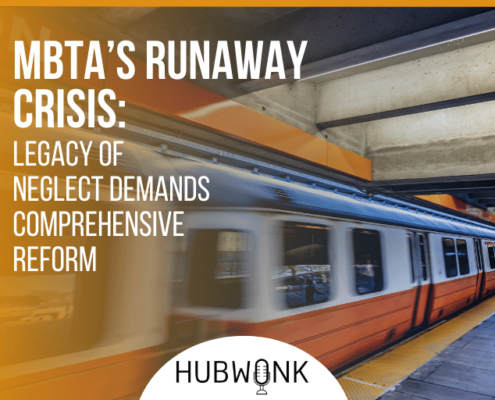
MBTA’s Runaway Crisis: Legacy of Neglect Demands Comprehensive Reform
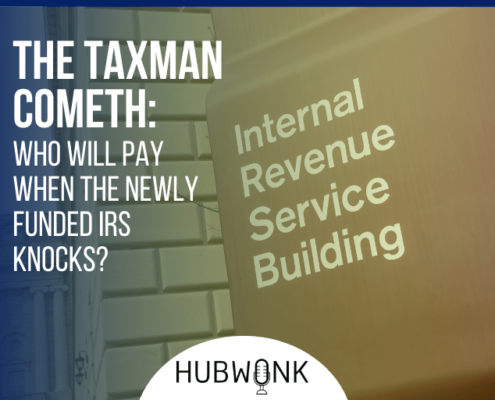
The Taxman Cometh: Who Will Pay When the Newly Funded IRS Knocks?

Civil Society’s Stockade: Protecting Pluralism From Progressive Puritanism
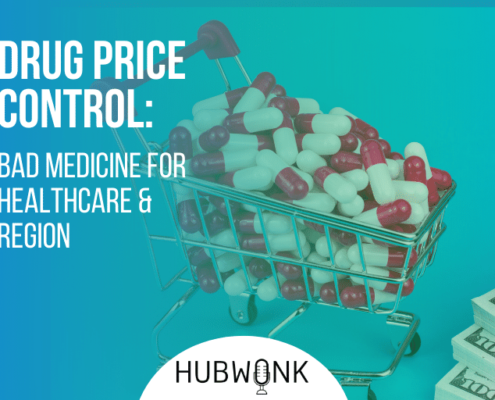
Drug Price Control: Bad Medicine for Healthcare and Region
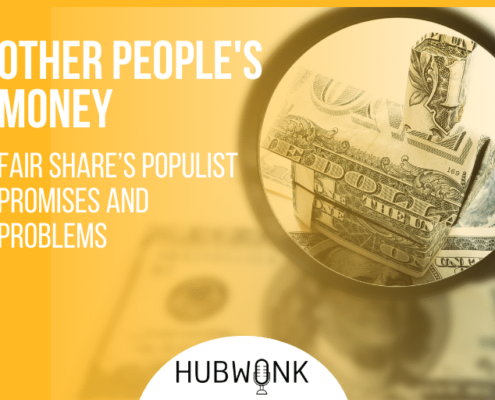
Other People’s Money: Fair Share’s Populist Promises and Problems

Law Enforcement Dividend: Who Benefits When Crime Is Prevented?
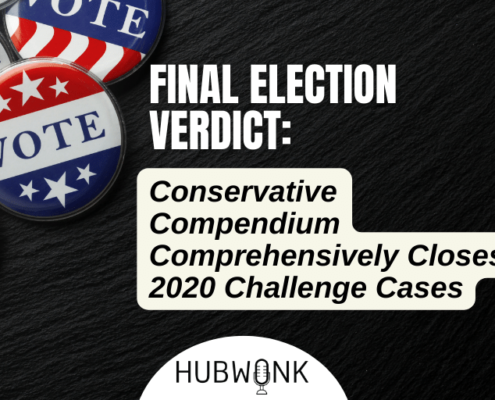
Final Election Verdict: Conservative Compendium Comprehensively Closes 2020 Challenge Cases
